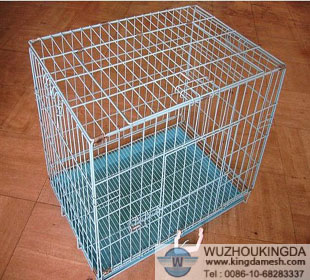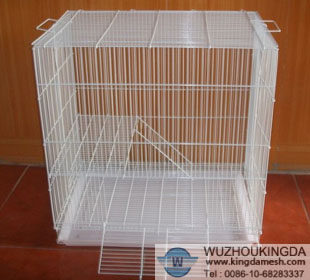How to Set Up a Bird Cage
How to Set Up a Bird Cage
Your bird's cage is his home, and he will most likely spend a great deal of time inside it. It is important to set up your bird's cage properly to create an interesting and safe home for your bird. A barren or overcrowded cage will not make a happy home for a pet bird, and improperly aligned perches and food dishes can create a health hazard. By following these steps, you can set up your bird's cage in a way that gives him a safe and enjoyable habitat to live in.
Instructions
1 Hang toys from the top of the cage, leaving adequate space between them so that your bird can access each toy. Be careful not to place them too far apart; all of the toys should be accessible from the top center of the cage, where you will place one of the perches.
2 Mount one perch along the top center line of the cage, so that your bird can access all of his toys while standing on it. Be sure to allow adequate space between the top of the cage and the perch, so your bird will not have to "slouch" while standing on it.
3 Mount a small perch near the top of the cage, in a back corner. This is a roosting perch, where your bird will sleep. Choose the corner of the cage that faces the quietest part of the room, rather than one near a window or door. Again, be sure there is enough room between the top of the cage and the perch to allow your bird to stand upright.
4 Mount food dishes in the cage. Some cages come with food dishes and feeding doors, but unless you have a very high-quality cage, these are probably poorly constructed and difficult to clean. Stainless steel coop cups and hard plastic lock-on cups are usually the best choices, since they are very easy to clean and can be removed and replaced in the cage easily. Whichever type of food dishes you choose, be sure not to mount them directly under perches to avoid the food being soiled by droppings. In general, you should mount the dishes in the lower third of the cage, one on each side of the main door. This will make them easier to access when you feed your bird each day.
5 Install a perch near the food dishes. Many, if not most, birds prefer to sit on the bowls while eating, but this perch gives them a place to rest before and after eating. This can be very useful when you are feeding your bird and the food bowls are out of the cage. It will also provide an area to stand on while drinking water, especially if you use a water bottle.
6 Mount the water bottle or water dish. Be sure that the bird can access his water from the "feeding perch" you installed in Step 5. Take special care to choose the placement of the water bottle or bowl so that it will not be soiled by droppings.
7 Add old newspapers, cage liners or nontoxic substrate to the bottom of the cage. You should only use substrate if your cage has a bottom grate installed, since even nontoxic materials such as corncob and walnut husks can cause crop impactions if consumed in large quantities.
8 Secure the doors of the cage. Many parrots are escape artists and can easily defeat most locking mechanisms. If you are placing a large parrot in a cage that does not have an excellent built-in lock, you should install keyed padlocks on every door. When securing cage doors, don't forget feeding doors and nest box doors, which are often very easy for a bird to open.



